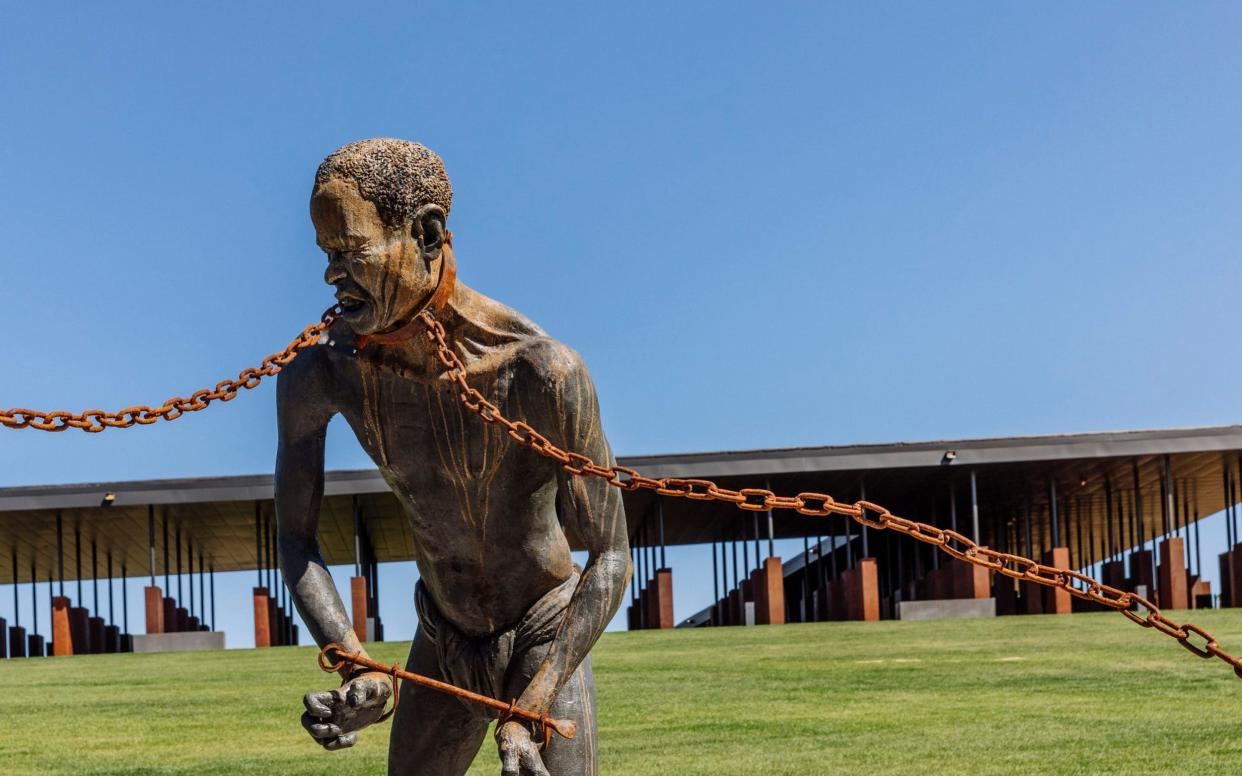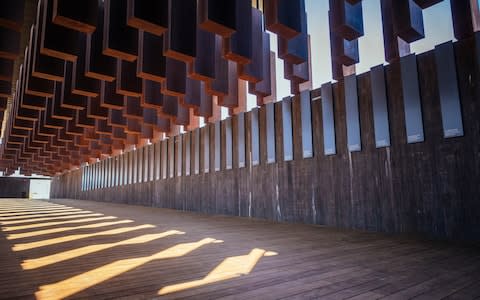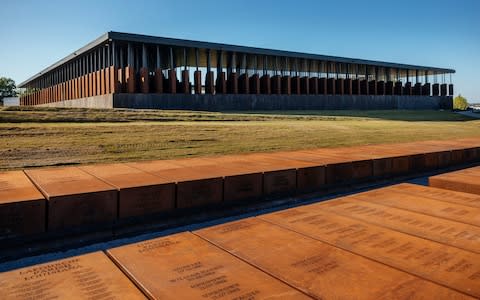America opens first national memorial to lynching victims

A memorial to recognise thousands of African Americans who were lynched to death has opened in Alabama.
It is the result of years of research documenting more than 4,000 killings by a group of lawyers.
The six-acre site includes a walkway with 800 weathered steel columns hanging from the roof, each listing the name of an American country and the people who were lynched there.
Along the walls the harrowing stories of some victims are detailed. One reads: "Park Banks, lynched in Mississippi in 1922 for carrying a photograph of a white woman".
Another reads: "Caleb Gadly, hanged in Kentucky in 1894 for walking behind the wife of his white employer".

The story of Mary Turner, who was hung upside down by an angry white mob, burned and then cut open so her unborn child fell to the ground, is also told in the memorial.
The memorial, which is located on a six-acre site in Montgomery, Alabama, is close to the Legacy Museum which once comprised part of the city's huge slave market but now serves as a companion to the monument.

Bryan Stevenson, the founder of the Equal Justice Initiative, the group behind the memorial, said the purpose of the memorial was “just seeing the names of all these people”.
Many of them “have never been named in public”, he told the New York Times, adding that representing them in one place gave a sense of scale to the bloodshed.

 Yahoo News
Yahoo News 
